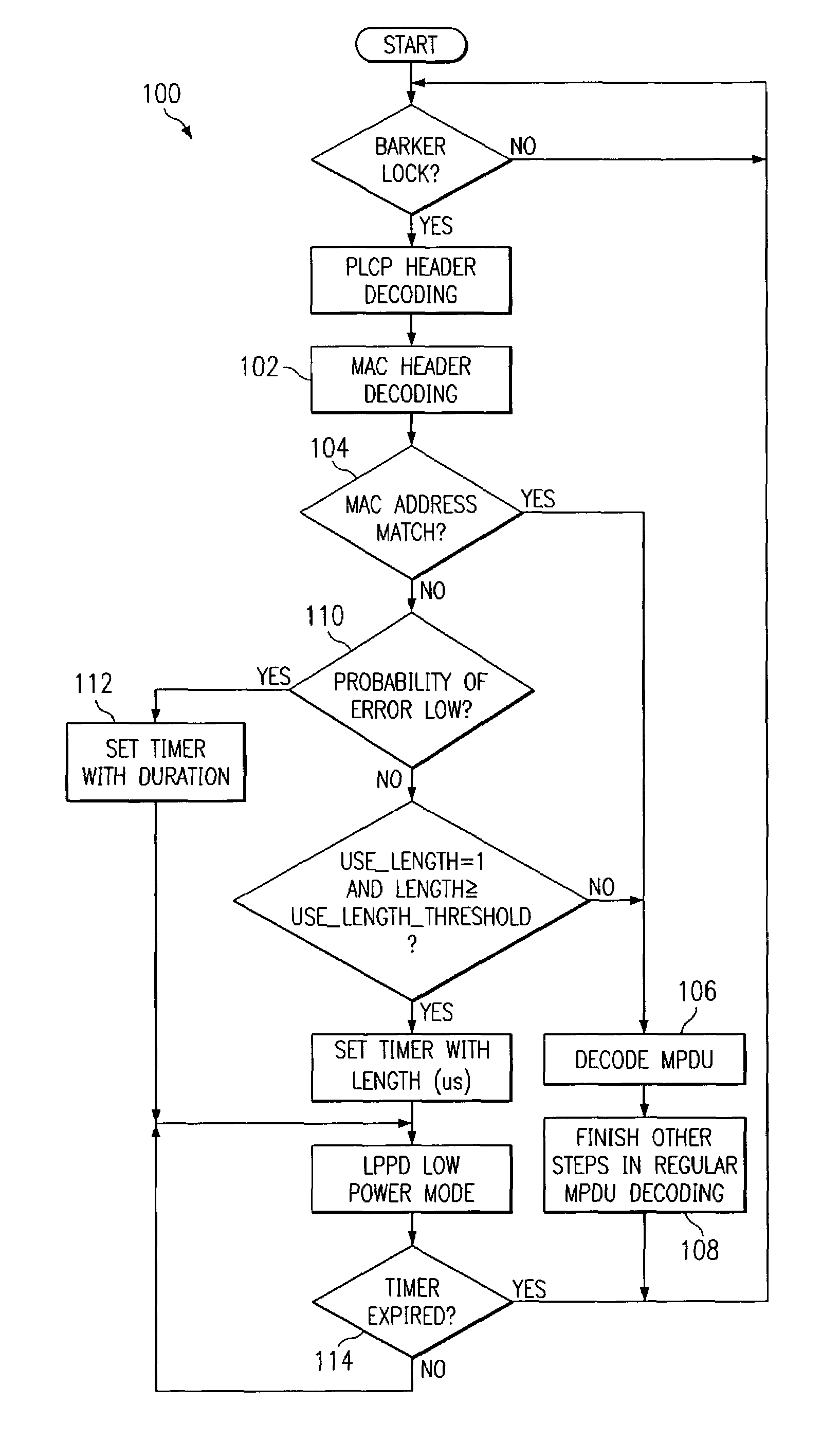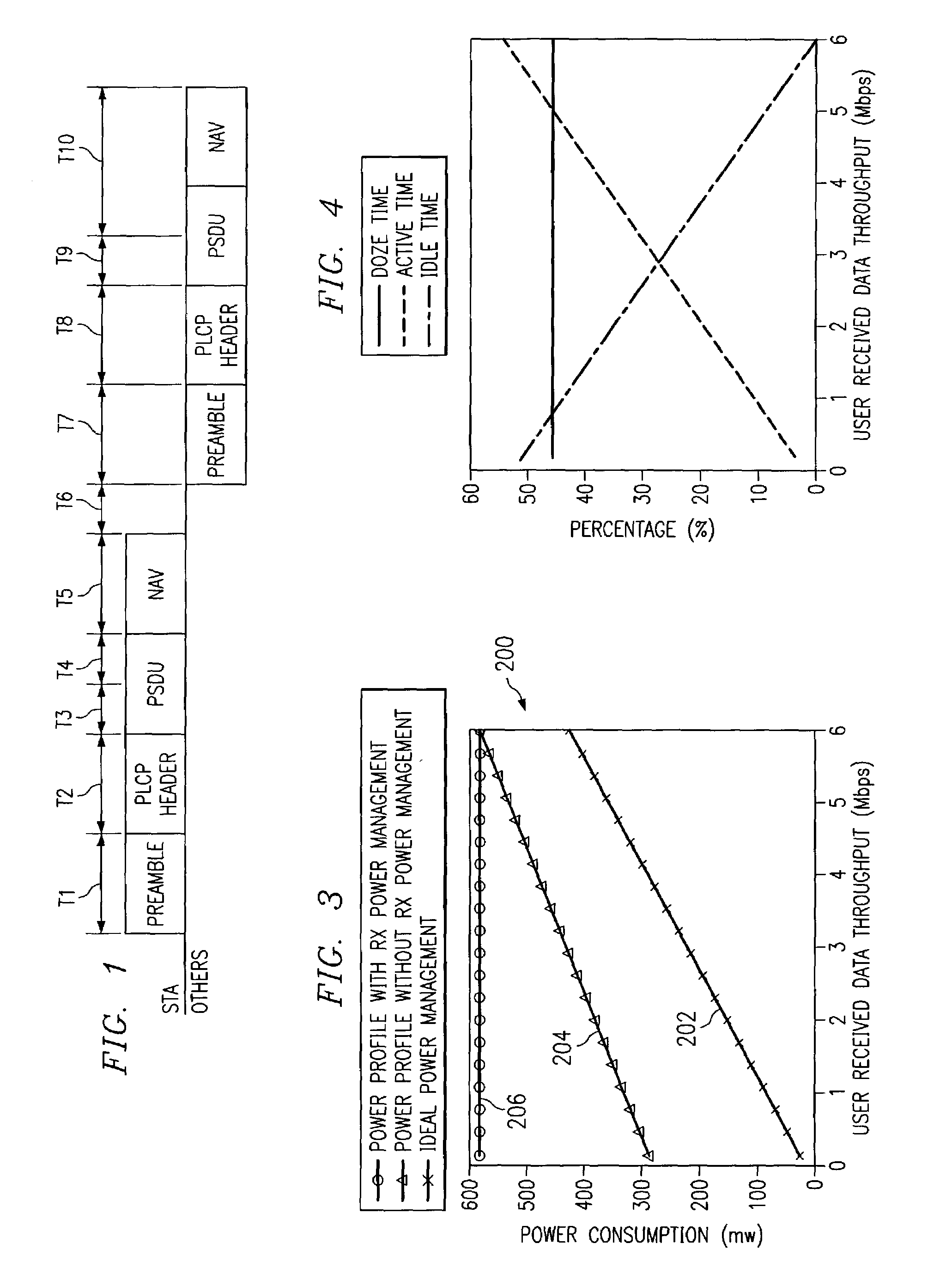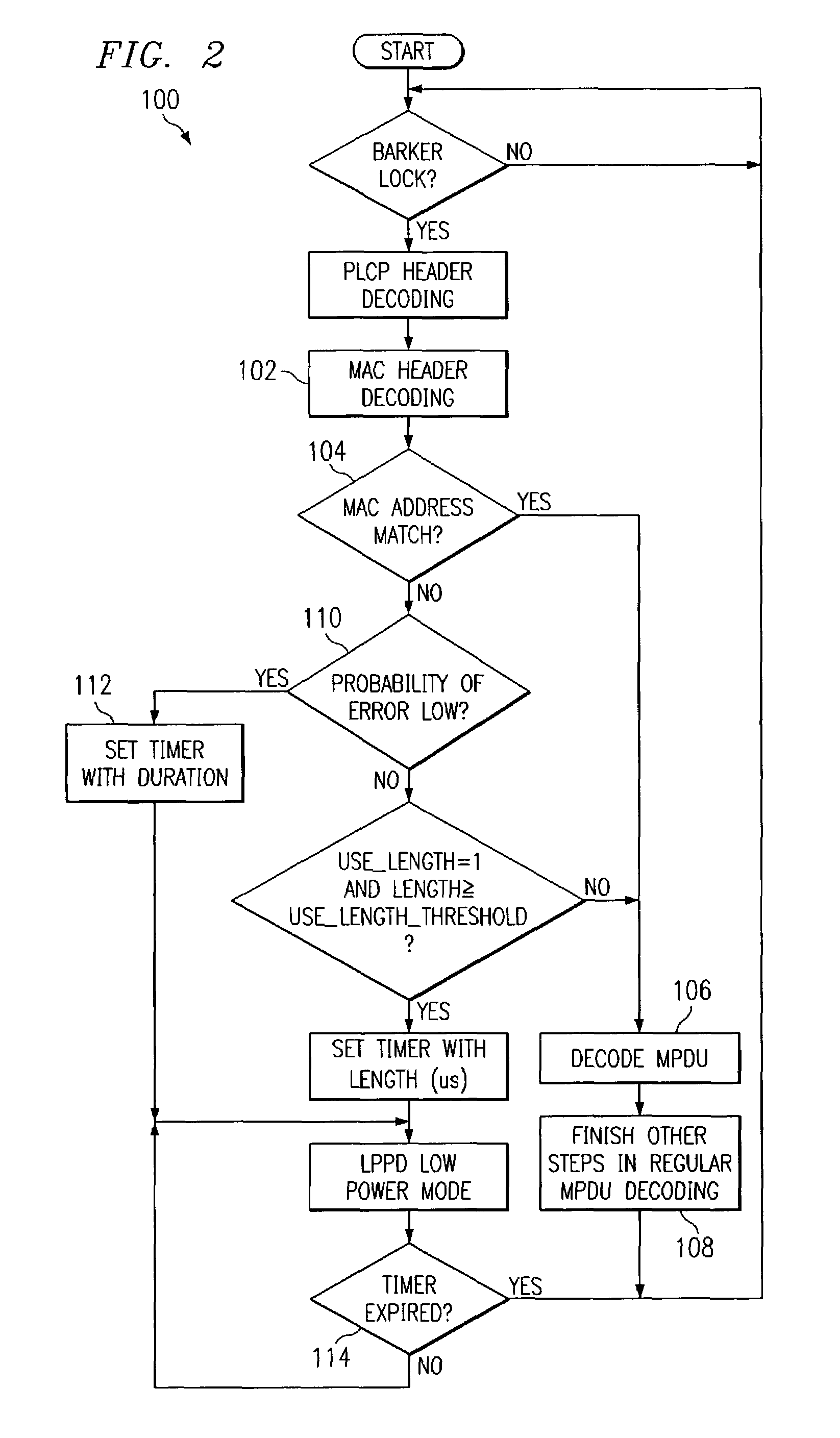Low power packet detector for low power WLAN devices
a low-power packet and detector technology, applied in data switching networks, high-level techniques, wireless commuication services, etc., can solve the problems of a lot of work left on the power reduction front and phenomenal overhead in power consumption, and achieve the effect of reducing the average power consumption of wlan devices
- Summary
- Abstract
- Description
- Claims
- Application Information
AI Technical Summary
Benefits of technology
Problems solved by technology
Method used
Image
Examples
Embodiment Construction
[0017]FIG. 1 shows the various stages for a receiver to decode a packet and establish a terminal power profile in each of the receiving states according to one embodiment of the present invention. Specifically, a module is utilized to scan for valid 802.11b packets, determine its destination, and shut down most of the system modules when the current packet on the wireless medium is not addressed to itself. This module is essentially a Low Power Packet Detector (LPPD) that serves as an active power regulator for the whole system. Instead of decoding all packets appearing on the air, the system is in active decoding mode only for decoding its own packets, and stays in less active mode to conserve power otherwise. The various stages shown in FIG. 1 can be described as follows:[0018]T1: Receive preamble of a packet addressed to the current station. The receiver looks for Barker lock, estimates channel response, sets equalizer, and corrects for timing and phase errors. The power consumpt...
PUM
 Login to View More
Login to View More Abstract
Description
Claims
Application Information
 Login to View More
Login to View More - R&D
- Intellectual Property
- Life Sciences
- Materials
- Tech Scout
- Unparalleled Data Quality
- Higher Quality Content
- 60% Fewer Hallucinations
Browse by: Latest US Patents, China's latest patents, Technical Efficacy Thesaurus, Application Domain, Technology Topic, Popular Technical Reports.
© 2025 PatSnap. All rights reserved.Legal|Privacy policy|Modern Slavery Act Transparency Statement|Sitemap|About US| Contact US: help@patsnap.com



